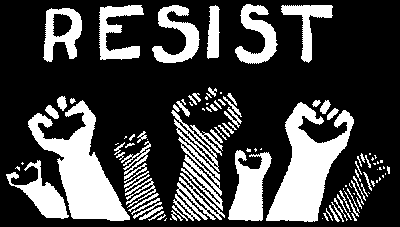Leadership

QoTD
Rhythm Of Life And Resistance To Change
Udayakumar Nalinasekaren
Dec 21, 2010
 When a human transitions into any socially and/or emotionally acceptable situation from a position of discomfort, for some time he or she goes through a period of enjoying that perceivably stable state of equilibirium. This is the honeymooning period of enjoying a success. The success of having escaped from some previous discomfort or an unstable state of equilibirium in life. However, humans also tend to get bored quickly with new position and comforts. The honeymoon eventually ends. Natural tendency after this honeymoon is to aspire for further improvement of quality of life. This aspiration soon builds up into discomfort with the current environment that was once enjoyable. We move back into an unstable state of equilibirium. During this rhythm of life, stimulus to change appears in one of the following forms
When a human transitions into any socially and/or emotionally acceptable situation from a position of discomfort, for some time he or she goes through a period of enjoying that perceivably stable state of equilibirium. This is the honeymooning period of enjoying a success. The success of having escaped from some previous discomfort or an unstable state of equilibirium in life. However, humans also tend to get bored quickly with new position and comforts. The honeymoon eventually ends. Natural tendency after this honeymoon is to aspire for further improvement of quality of life. This aspiration soon builds up into discomfort with the current environment that was once enjoyable. We move back into an unstable state of equilibirium. During this rhythm of life, stimulus to change appears in one of the following forms
Scenario 1: Something that impactfully threatens current state of equilibirium
Example: A key stakeholder in life falls seriously ill.
Scenario 2: A stroke of luck
Example: A superior at work selects one person amongst a team of equally qualified people for a task that necessitates travel and stay abroad.
Scenario 3: Something that requires a compromise to the current comforts (albeit temporary in nature sometimes) with a promise of a brighter future
Example: A doctor proactively recommends a daily routine of physical exercise to sustain health and fitness
In scenario 1, the human response to need for change is usually very emotional and immediate. In many people, depending on the depth of the threat, the fight or flight mechanism triggers immediate change.
A college student wants to drop out and start a new business. She wants a loan guarantee and the Dad does not want to signup or worse wants the daughter out of the house immediately.
A daughter falls in love and her Mom orders house arrest.
In scenario 2 as well, most tend to embrace the change without much thinking. The hope and promise of the better future is so emotionally appealing (or tempting/ overwhelming) and the emotions tend to sheild any logic and reasoning.
The stimulus in scenario 3 is not emotional. It is very rational.
Interestingly, when we hear such stimulus, we first do not want to register it in our mind. The current state is so comfortable and the compromise required is threatening. The possibility for realization of the hope is too distant and does not sound obvious. Therefore the mind first ignores the stimulus by brushing it aside, not letting it in.
If the stimulus persists, we tend to find ten reasons why the idea has not worked in the past. We become creative in finding reasons why the idea may work for somebody else but not us. Here is an example continuing on the earlier example of daily workouts - "I will become an easy target for the street dogs if I jog. They have a particular liking to chase me!".
If the stimulus continues to persist, we then standup an resist. We assign higher priorities to other parts of life and justify why we cannot change as the stimulus demands. Example: "I have a 9 AM daily meeting and I can't be looking tired and worn out in front of my boss".
The stimulus has to persist usually beyond this threshold for any positive response.
We threrefore clearly go through denial in three phases namely (1) not letting the idea in (2) ridiculing the idea (3) resisting change before we actually give in to the change. Mahatma Gandhi once said and I quote
"First they ignore you, then they laugh at you, they they fight you, then you win.A leader wanting to bring about any change needs to develop patience and strategies to overcome denial. Self mastery begins when we are able to assess any stimulus rather than involuntarily react to it.
My Artwork
Coming soon...Latest Blog Posts
Coming Soon
Archives
Search



